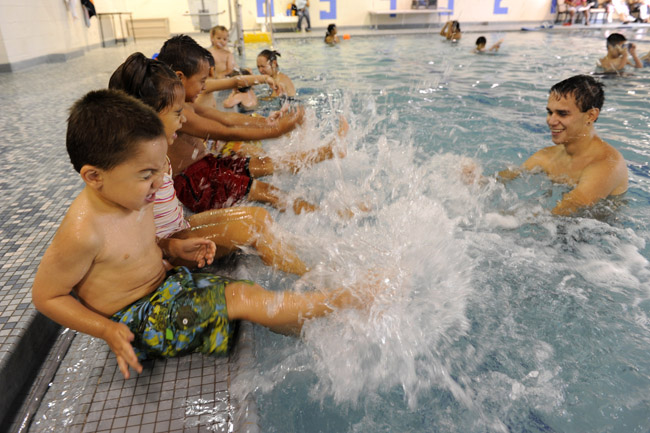Marisa Treviño
LatinaLista
In two weeks, school ends for my granddaughter. You may be thinking, that can’t be. It’s August and school is supposed to be starting, not ending. But my granddaughter, who just turned 21 months, has been enrolled in summer swimming classes and she’ll take her last plunge into the pool soon. Then my daughter and her husband will have to decide whether or not it’s worth to continue the half-hour, once-a-week-across-town classes for the next two months.
It should be a no-brainer. However, this school, one of the few that offers infant/toddler classes, is pricy. In this day and age of rising costs and stagnant wages, long-term value is often weighed against immediate return. Luckily, for my daughter, my husband and I believe in the long-term benefit of our nieta knowing how to swim. We started my daughter and her brother in YWCA swim classes when they were toddlers.
The peace of mind I had, as they got older, knowing that when they were invited to a swim party or to the lake by friends’ families they would know what to do if they got into deep water was invaluable. Unfortunately, too many parents, especially Latino and African American, don’t have that same peace of mind.
Whether it’s because of cost, access or fear/ignorance, too many parents don’t get their children swimming lessons. To some parents, pools and bodies of water are an extension of the playground. Just as children don’t need formal lessons to climb the monkey bars or pump themselves on a swing, these parents mistakenly believe that instinct will kick in when their child starts floundering in the water. Unfortunately, no — no matter how old they get.
According to researchers at Safe Kids Worldwide, drowning is the leading cause of death for children ages 1-4 years-old, “the second leading cause of death for children 5-14 years of age, and the third leading cause for children under 1 and older teens ages 15-17.”
Even if children, or adults, survive a drowning, near drowning can have serious consequences.
According to the Centers for Disease Control & Prevention (CDC), nonfatal drowning injuries can cause severe brain damage. It can leave anyone with long-term disabilities like memory problems, learning disabilities, and in a worst case scenario, a vegetative state for the rest of their lives.
A study by the USA Swimming Foundation and the University of Memphis found that 70 percent of African American and 60 percent of Latino children can’t swim. And though 40 percent of Caucasian children know how to swim compared to children of color, a startling CDC statistic reveals that Caucasian children, ages 1-2, have the highest pool drowning rates among all groups.
Sadly, Texas leads the nation in total and per capita pediatric drownings, according to the Fort Worth Drowning Prevention Coalition. More children have drowned so far this year in Texas than in all of 2015 according to the Texas Department of Family and Protective Services.
Researchers published a paper in Pediatrics & Adolescent Medicine in 2009 finding that among children, between the ages of 1-4, who had been enrolled in formal swimming lessons, their risk of drowning was reduced by 88 percent.
While swimming classes can be costly, there are year-round programs to help all income families get their children into classes. The USA Swimming Foundation’s Make a Splash Initiative has delivered swim classes, via local partners, to more than 4 million children nationwide since 2007.
In addition to private swim schools, other class venues can be found at the local YMCA/YWCA, parks and recreation departments and even private swim instructors who will conduct classes in backyard pools.
Statistics say most children drown between the months of May and August. Not surprising since families are leaving summer fun behind and starting a new school year. Yet, swimming, like reading or math, is a life-long learning skill that requires more than a few months of lessons to know how to have fun in the water while staying safe.



